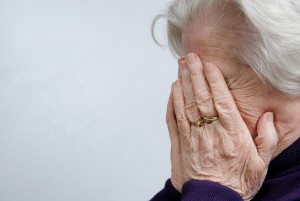 Trigeminal neuralgia (TN), also known as tic douloureux, consists of attacks of very severe, sharp/stabbing, sometimes electrical or burning, one-sided (usually right) face pain. The attacks may be rare or occur multiple times per day, and may greatly impact function. The pain typically resolves between attacks. Triggers may be thermal (hot drinks or cold air), tactile (touching, shaving), or mechanical (chewing, talking, smiling).
Trigeminal neuralgia (TN), also known as tic douloureux, consists of attacks of very severe, sharp/stabbing, sometimes electrical or burning, one-sided (usually right) face pain. The attacks may be rare or occur multiple times per day, and may greatly impact function. The pain typically resolves between attacks. Triggers may be thermal (hot drinks or cold air), tactile (touching, shaving), or mechanical (chewing, talking, smiling).
This pain arises from damage to the fifth cranial nerve, which runs near the eye, the upper jaw and/or lower jaw. Some with TN know the cause of their nerve damage, such as facial trauma, or underlying neurological diseases like MS. It is thought that when the condition occurs spontaneously, it may be due to pressure on the nerve from a small aneurysm deeper in the brain.
Conventional treatments have greatly improved in the last two decades. There are now two very specialized procedures that may produce wonderful relief. One ablates, or deadens, the damaged portion of the nerve so that it no longer sends pain signals to the brain. The other involves neurosurgical repair of any small aneurysm putting pressure on the nerve. If available, these options should be pursued. Medications have varying efficacy, and include medications often used for nerve-mediated pain: opiates, and medicines in the anti-depression and anti seizure classes. [1]
If conventional therapy proves provides incomplete pain management, Neurological Scalp Acupuncture, along with traditional body acupuncture can address TN to a significant extent. Combined with Chinese Herbal Medicine, pain intensity and/or frequency may be addressed. [2] [3] [4]
Learn more about Trigeminal Neuralgia
X
These brief overviews of conditions represent distillations of basic and current medical reviews from the following sources:
[1] Conventional Medical Sources
“Harrison’s Principles of Internal Medicine: Volumes 1 and 2, 18th Edition”. Dan Longo Anthony Fauci, Dennis Kasper, Stephen Hauser, J. Jameson, Joseph Loscalzo. McGraw-Hill Professional; (July, 2011)
Medscape eMedicine Physician’s online resource. Various review articles accessed June 2013:
Migraine Headache
Jasvinder Chawla, MD, MBA Chief of Neurology, Hines Veterans Affairs Hospital; Associate Professor of Neurology, Loyola University Medical Center
Tension Headache, Cluster Headache
Michelle Blanda, MD Chair, Department of Emergency Medicine, Summa Health System Akron City/St Thomas Hospital; Professor of Emergency Medicine, Northeastern Ohio Universities College of Medicine
Temopromandibular Joint Disorders
Charles F Guardia III, MD Instructor in Neurology, Department of Neurology, Dartmouth Hitchcock Medical Center, Geisel School of Medicine at Dartmouth
Trigeminal Neuralgia
Manish K Singh, MD Assistant Professor, Department of Neurology, Teaching Faculty for Pain Management and Neurology Residency Program, Hahnemann University Hospital, Drexel College of Medicine; Medical Director, Neurology and Pain Management, Jersey Institute of Neuroscience
[2], [3] “Acupuncture Energetics: A Clinical Approach for Physicians”. Joseph M. Helms. Medical Acupuncture Publishers; 1st Edition. (1995)
- “Foundations of Chinese Medicine: A Comprehensive Text for Acupuncturists and Herbalists”. Giovanni Maciocia. Churchill Livingstone; 2 Edition (July, 2005).
- “Diagnosis in Chinese Medicine: A Comprehensive Guide”. Giovanni Maciocia. Churchill Livingstone; 1st Edition (January, 2004).
[4] “Chinese Scalp Acupuncture”. Jason Ji-shun Hao, Linda Ling-zhi Hao and Honora Lee Wolfe. Blue Poppy Press; 1st Edition. (November, 2011)
